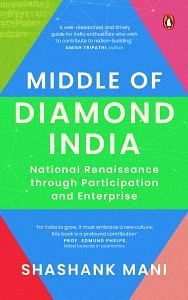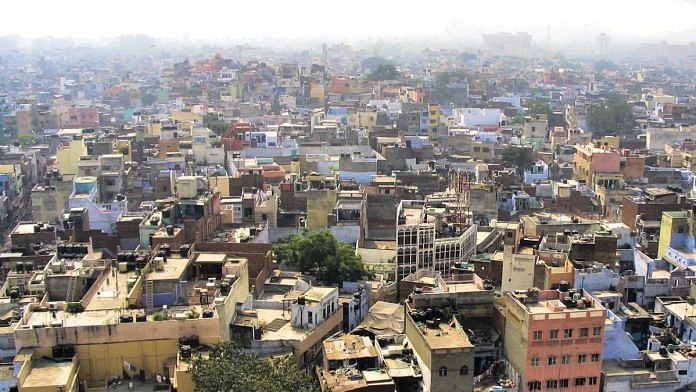As revolutionaries, Mangal Pandey and Mahatma Gandhi were opposite in temperament, but their efforts at different times vectored the British out of India over ninety years of struggle. Both of them carried the spirit of the Middle, and while their methods were different, their origins and early life in small towns and districts powered their actions. Leading up to Independence, the Middle played a frontal role in the freedom struggle and it was punished the most by the British.
During the course of my work in Deoria, a district adjoining Ballia, the birthplace of Mangal Pandey, I see the scars in society through the punishment meted out to this area by the British after 1857. Gandhi too derived his political strength by mobilizing those in small towns and districts. Post-Independence, this role and sacrifice was not acknowledged and the Middle was relegated to the national back seat.
I discovered Gandhi through his autobiography, but a family memory also gives me a spiritual connection to him. Gandhi visited Gorakhpur in February 1921, shortly after the non-cooperation movement had been launched. As the train carrying Gandhi steamed into Gorakhpur, my grandfather was one of fifty students from his college assigned to receive him. As a sea of humanity swept on to the platform, this fragile student cordon broke.
The Mahatma was saved only by the intervention of the Ali brothers and Dr Bridges, the principal of St Andrews College, where my grandfather was a student. At the guest house, my grandfather was stationed as a guard outside Gandhi’s room. After a few minutes, Gandhi proceeded for his public meeting. Two lakh people showed up for his rally at Baleka Maidan, where, according to my grandfather, Gandhi ‘. . . spoke in his feeble voice and broken Hindi.’
Also read: Before meeting Narayana Murthy, Sudha hoped he looked like Rajesh Khanna
The person who impressed my grandfather the most was Maulana Mohammad Ali, who spoke with verve and clarity of thought. The event made a lasting impression on many and while my grandfather did not give up his studies as part of the non-cooperation movement, he understood that a revolution was in the making.
But India’s modern revolutionary history commenced sixty-four years before that time with the sound of a bullet on 29 March 1857, when a man from Ballia took aim at the British empire. Mangal Pandey hailed from Nagwa village in eastern UP.
He had enlisted in the British army but was known for his self-esteem, even under the overpowering discipline of the army. The revolution he called forth was a private one and it sparked a war that started with a defence of culture. On the Barrackpore parade ground, when he took aim, Mangal Pandey probably knew that the consequence of his revolt would be death.
Once he saw he was going to be overpowered, he tried to kill himself. Shortly after his capture, he was hung at the gallows on 8 April, eleven days after he had raised his gun. With his death came alive an India that had been tormented for 100 years—tormented by the British but also by its own weakness and contradictions, which had allowed British rule. The spark of 1857 awoke the country and over the next ninety years, the Middle served both as catalyst and key actor in the struggle for independence.
India’s First War of Independence was ‘led by the lower- middle-class men whose status and livelihood were most severely corroded by the tactics the British used to protect their rule.’ That lower-middle-class man, Mangal Pandey, challenged the dominance of the British in a frontal way on a military parade ground. Till that time, ‘Company Bahadur’ was a name respected and feared by Indians.
From the Battle of Plassey, 100 years prior, the East India Company had established their rule in India, converting a company listed on the London Stock Exchange into a ‘joint venture’ with the British government through the Charter Act of 1833. In the time leading up to 1857, the East India Company was a ‘. regime suspended from above the lives of its subjects having only the thinnest connection with the people it was supposed to rule.’ This system was based on a method of control instituted by Cornwallis around 1800, elaborated later.
Also read: Rapes by policemen made me feel like a worm, never left my conscience—ex-top cop Julio Ribeiro
The draconian aftermath
The reprisals that took place after 1857 left India, particularly the north, reeling. A private company that had encroached on a civilization as old as human history sought to bring it to its knees. The East India Company lashed out at India as if it had belonged to them from antiquity. Atrocities were committed on both sides, as in any civilian theatre of war, but the British acted to stamp out the very spirit of society through visible violence. Mass executions, many at the mouth of a cannon, and public hangings were common. Forces from outside of UP, Bihar and Bengal were brought in to quell the rebellion. A significant cantonment was created in Lucknow to keep military firepower close by.
British administration was given teeth and anti-citizen laws to protect the administration from its own people were formulated. Local zamindars and rajas who helped the British quell the revolt were co-opted, while others were persecuted. English settlers were already present as indigo farmers in towns such as Campier Ganj in eastern UP and they became the local eyes and ears, with friendly zamindars acting as trojan horses across the districts of Purvanchal and Awadh.
 This excerpt from Shashank Mani’s ‘Middle of Diamond India’ has been published with permission from Penguin India.
This excerpt from Shashank Mani’s ‘Middle of Diamond India’ has been published with permission from Penguin India.



